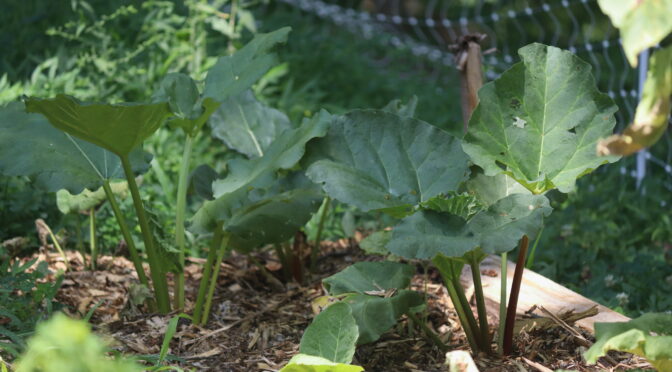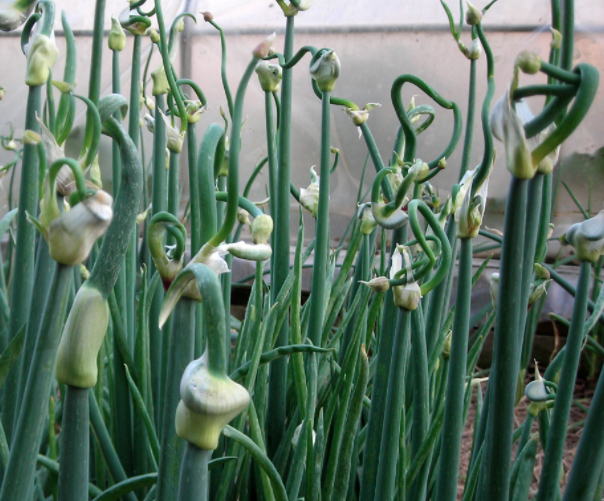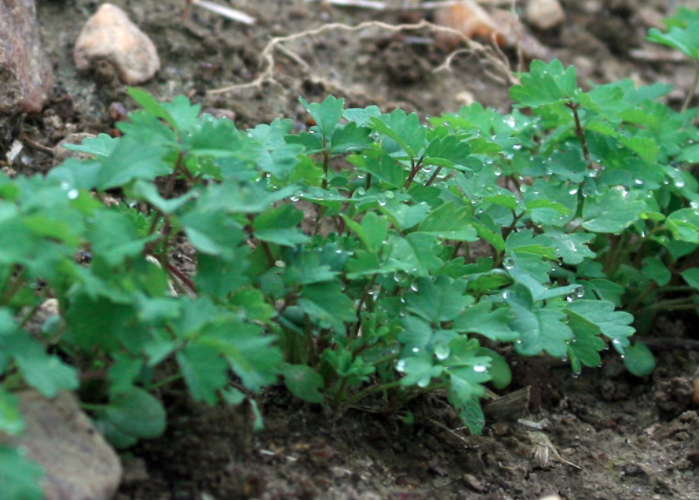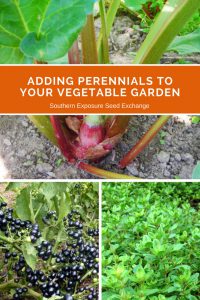We’ve seen an uptick in interest in adding fruit and perennials to the garden. Though it isn’t technically a fruit, one of our favorite options for mid-Atlantic growers is rhubarb, also known as the pie plant. This hardy perennial is great for small space gardeners, produces in early spring, and is easy to grow from seed, making it an exceptionally affordable option.
The variety we grow at Southern Exposure is ‘Victoria.’ It’s an English heirloom named for Queen Victoria, first available in 1837. Today, it remains a popular variety with home gardeners and commercial growers.
Reasons to Grow Rhubarb
We think rhubarb doesn’t get the praise it deserves. Here are some of the many reasons we appreciate this wonder crop and why you should, too:
1. Rhubarb makes some delicious baked goods, from the classic strawberry rhubarb pie to tasty new recipes like a rhubarb fool or rhubarb pound cake.
2. Rhubarb contains anthocyanins, a type of antioxidant that has demonstrated heart and brain health benefits and may reduce your risk for certain types of cancer and type II diabetes.
3. You can take your spring cocktails up a level with rhubarb harvest and easy recipes like Pinch and Swirl’s rhubarb cocktail.
4. Rhubarb provides a tasty, fruit-like crop long before most other crops are ready to harvest.
5. Rhubarb isn’t good just for sweets! You can use rhubarb stalks to create savory recipes like rhubarb and cinnamon red lentil curry or spring rhubarb salsa.
6. Rhubarb is high in vitamin K, essential for bone health, blood clotting, and cardiovascular health.
7. In zones 7 and 8, you can utilize the shade parts of your property by turning them into rhubarb beds. They will appreciate partial shade in these warm climates.
8. Rhubarb has an interesting history. It is native to the cooler climates in China, Mongolia, and Siberia, and the Chinese have used it medicinally for at least 5000 years.
Only rhubarb stems are safe to eat. Don’t eat rhubarb leaves as they’re high in oxalic acid, which can cause kidney problems.
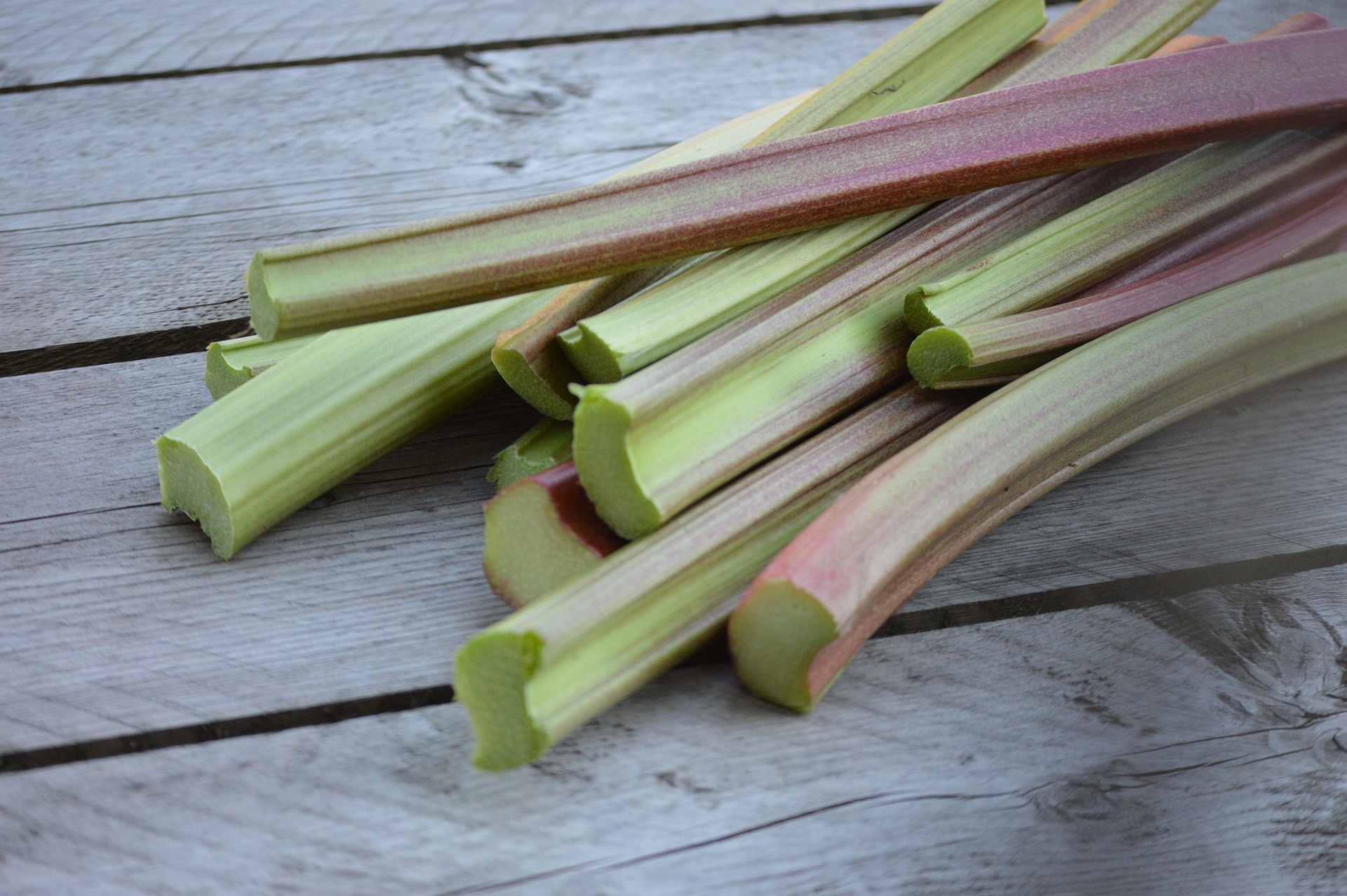 Growing Rhubarb in Zone 6 and Lower
Growing Rhubarb in Zone 6 and Lower
Rhubarb loves cool climates and thrives as a hardy perennial in these zones. Each fall, your rhubarb will die back to the ground with hard autumn frosts, but it will pop up again next spring and is usually ready to harvest by late May or early June. Harvest just a few stems at a time during the spring and fall, leaving some leaves to continue growing.
Growing Rhubarb in Zone 7 and 8
In our 7a gardens and the rest of zones 7 and 8, rhubarb tends to behave more like a short-lived perennial. Hot summer days are hard on it, so it’s essential to plant it somewhere that it will receive afternoon shade. It’s an excellent crop for making use of shady spots in the garden.
Growing Rhubarb in Zone 9 and Higher
Unfortunately, rhubarb isn’t a big fan of the long, hot summers, short winters, and fungal diseases found in the deep south. However, this doesn’t have to totally eliminate it from your garden plan. Rhubarb can be grown from seed annually in these climates. ECHO (“Educational Concerns for Hunger Organization”) in Florida has had good luck planting rhubarb seed in August and harvesting in March-May.
Learn More About Growing Rhubarb from Seed
Growing rhubarb has many benefits, and knowing how to grow it from seed makes it an affordable option for any gardener. Learn to grow rhubarb no matter where you live with this comprehensive guide from Ira Wallace, the godmother of southern seeds.

